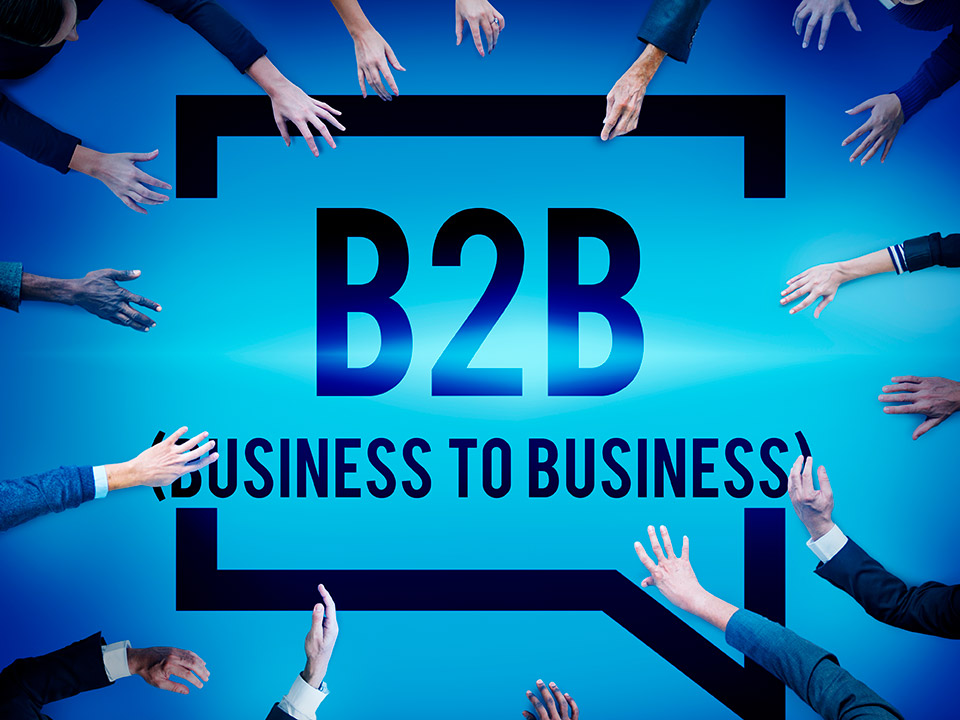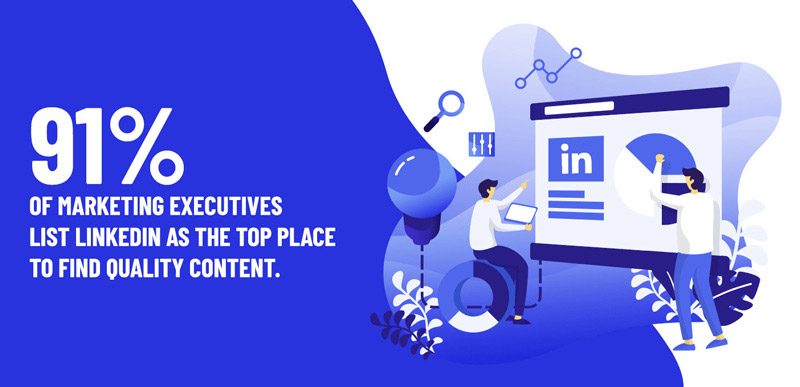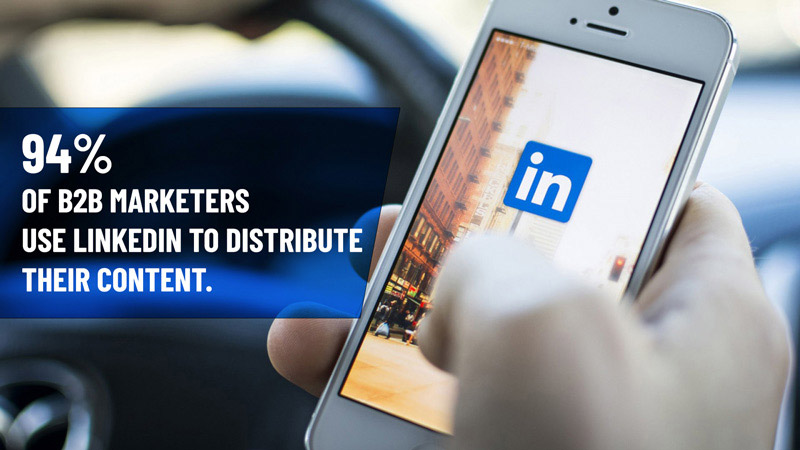
What are the effective strategies for B2B growth using LinkedIn?
When it comes to LinkedIn marketing, keep in mind that, unlike Facebook, the LinkedIn audience is mature and unresponsive to irrelevant or unneeded information.
To put it another way, don’t try to replicate your Facebook, Twitter, or Instagram marketing strategies when you are on LinkedIn. LinkedIn is a professional networking site, and you should approach it to get the most out of it.
Here are a few strategies to get effective B2B growth using LinkedIn,
1. Make a captivating business page
Every social media, including LinkedIn, needs a terrific business page where visitors can learn more about your company and culture.
LinkedIn Company Pages are similar to Facebook company pages in that they are devoted to specific businesses, organizations, and institutions. LinkedIn users may find these pages and follow them to remain updated on corporate news, job openings, and big announcements.
If you don’t have a LinkedIn company page for your company, you’re missing out on many followers, potential customers, and incredible talent. Right now, go to your LinkedIn profile and build a corporate page for your firm.
2. Host in-person events with thought leaders of the industry
LinkedIn Live is still not accessible to everyone, but I expect it to become available to LinkedIn users and corporate pages shortly.
Let’s imagine you could secure live streaming access for your LinkedIn profile or corporate page. Now, use it to hold live sessions and interviews with thought leaders in your business on themes that are relevant to the clientele you want to attract.
3. Make Rich Media Content Available

LinkedIn enables you to post a range of items on both your profile and business page. Images, movies, pdfs, documents, and text articles may be shared.
For the last couple of years, I’ve been generating various types of material on LinkedIn, and I’ve seen that text postings are the most popular.
On the other hand, videos and papers are undoubtedly the most effective kinds of content for generating B2B leads. This might be because videos and papers (pdf, worksheets, and docs) enable you to demonstrate your company’s knowledge in an interactive way, which helps you gain brand credibility and gain the confidence of potential clients.
4. Empower employees to act as influencers
You need influencers in the B2B business who can back up their statements with experience and competence, not simply the amount of followers on their social media platforms.
B2B influencers are often industry decision-makers such as CEOs, CMOs, and those who sit on the upper management levels of successful organizations.
It might be challenging to persuade them to speak for your company. This is why your company’s influencers must come from inside to talk about the company’s successes, technologies, services, and customer success stories.

Furthermore, according to LinkedIn, material published by employees has 2x the engagement of information shared by a corporation, and salespeople who share content on LinkedIn regularly are 45 percent more likely to meet their sales objective. This demonstrates that engaging employees on LinkedIn is advantageous for marketing and branding and overall company success.
5. Encourage staff to participate in LinkedIn discussions
To guarantee that your LinkedIn post reaches your target audience, you must first defeat the LinkedIn algorithm to promote your material to a broader audience.
Suppose your article generates a lot of interaction within the first 30-60 minutes of being shared. In that case, LinkedIn classifies it as excellent material and aggressively promotes it to the first, second, and third-degree connections of individuals who interacted on it.
If the interaction is low during the first hour of sharing a post, however, the reach of your post is restricted to first-degree relationships only.
The most significant part is that LinkedIn just added a function that notifies workers when a new post on the corporate profile is published. This is a helpful tool for ensuring that your staff knows the most recent post on the page and responds on time.
6. Post articles on LinkedIn
You may use LinkedIn Articles to provide case studies, market research data, or anything else that your target audience would find helpful. You may also include links that direct readers to your company’s website for conversion.
The wonderful thing about LinkedIn Articles is that they aren’t exclusively for LinkedIn members. Because these articles are search engine friendly, your LinkedIn articles may appear in Google search results as well. So, before you start writing articles on LinkedIn, make sure you’ve done your keyword research.
7. Make use of LinkedIn Ads
You must recognize that your LinkedIn audience consists of decision-makers from your target organizations and that to gain their confidence, you must first establish your reputation.
You must also guarantee that all of the techniques mentioned above are executed properly to get a reputation.
Only once you have great content and interaction on your business page can you use LinkedIn Ads to reach out to your target demographic.
The most significant feature of LinkedIn Ads, which distinguishes it from other advertising platforms, is that it allows you to target your audience based on professional qualities such as job function, job position, skills, business name, industry, etc.
Even though LinkedIn Ads is more costly than other social media advertising platforms. It is well worth the investment since it enables you to directly access your high-value consumers — decision-makers.
8. Use LinkedIn to retarget visitors to your website.
Do you know that 98% of website visitors depart without providing their email addresses? Yes, it is a truth you should be aware of. You should check your website statistics to confirm this for yourself.
If you agree, you should take action and use LinkedIn website retargeting advertisements for retargeting those visitors on LinkedIn with a relevant message based on their previous interactions with your site.
For example, if a visitor to your site viewed a specific service or product page but did not convert, LinkedIn enables you to retarget them with sponsored ads to lure them back to your site.
You’ll be able to convert 50% of your website visitors if you use this tried-and-true method. All you have to do now is make sure your remarketing material is relevant to the visitors’ previous interactions with your site.
Unlike Facebook, Instagram, and other social media platforms, LinkedIn is a platform where the quality of the material and information you offer defines your brand, not the number of followers you have.
Read more about HOW TO USE HASHTAGS ON LINKEDIN: A STEP-BY-STEP GUIDE.
As a result, ensure that your potential clients obtain excellent information about your product, services, and industry at every level of the B2B marketing funnel while developing your LinkedIn marketing plan.



